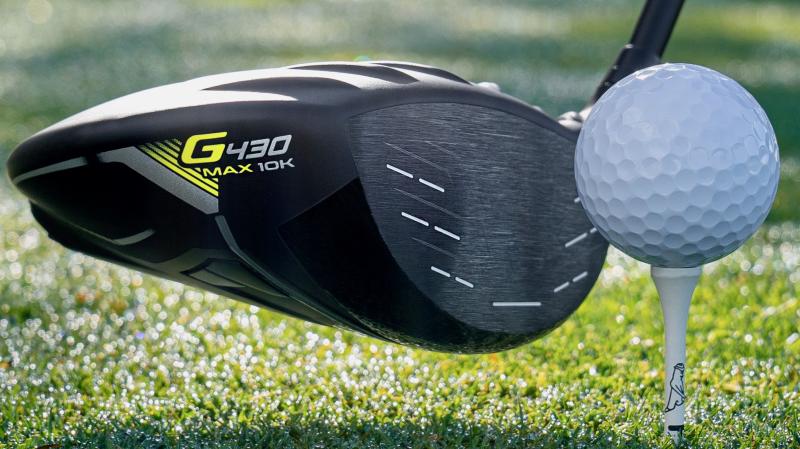Ping’s incremental improvements spark continued success
At this year’s PGA Show, I enjoyed yet another pleasant conversation with Ping’s Director of Golf Science Erik Henrikson, PhD, as we discussed several of the Arizona company’s 2024 offerings.
Once again, he had to black out the “C” in front of the “K” that always appears on his last name as printed on his show badge.
We share a common experience with folks who can’t seem to spell surnames.
Henrikson began with the G430X Max 10K driver, a new addition to Ping’s ongoing line of G430 drivers.
The 10K refers to moment of inertia, a way of expressing twisting forces at impact. The higher the MOI, the greater the club resists twisting, thus increasing the chance that the ball will fly where intended.
Henrikson explained that the combined MOI numbers are measured on two axes – heel to toe and top to bottom.
In pre-launch testing, the Max 10K produced 5900 heel-to-toe and 4100 top to bottom. He also said the Ping G400 Max driver, one of the company’s all-time best sellers, came close to that threshold.
The G430 Max’s MOI improvements reflect a common element of modern club company goals – creating incremental improvements on already good (and popular) designs.
Henrikson said the placement of carbon fiber enabled the improvement in the new model’s shell, called the Carbonfly Wrap Crown. He said it produces “a little bit lower spin” than Ping’s other drivers.
Henrikson also said its standard 28-gram tungsten backweight can be customized when working with a club fitter. The new driver also continues to use Ping’s turbulators, the ridges on top of the head that improve aerodynamics.
We then moved on to the Blueprint S and T irons. Henrikson said the S line replaces the company’s I59 model. The S also uses the same loft and lie angles as Ping’s ongoing I230 irons, which makes it easier to mix and match model lines in the fitting process. He said more and more players use mixed combinations rather than sticking to one model from four-iron to pitching wedge.
Henrikson said the irons feature tip and toe weighting. The tip weight is placed under the shaft inside the hosel and can be altered during fitting. He said the S model has a lower center of gravity than the T line, which should increase dynamic loft at impact.
We also discussed Ping’s new S159 carbon steel wedges, which come in two color schemes - chrome and midnight. The cast clubs are available in six different grind options for the sole. When I use Ping’s Webfit Wedge guide, it recommends the S grind for how I play. Your mileage may differ.
The new wedges come with Ping’s proprietary coating that sheds moisture and maintains club performance in wet conditions.
We also took a quick look at two other Ping iron options, the I530 and G730. The I line is a players distance design with a hollow body construction. Henrikson said these irons work well for players with handicaps from scratch to about 10.
The G730 is Ping’s most recent game improvement-level model. He said company testing showed an up to 7% improvement in results from heel or toe mishits. The model suits players with handicaps above 10, especially those wanting more height as well as forgiveness.
Local club competition results
The Kings Creek Country Club Ladies 9-Hole group played a Team Cha Cha Cha game July 9. Scoring uses one best score on the odd holes and two best team scores on the even holes.
Jeannine Doane, Hope Lavachia, Pam Cranston and Nancy Derrickson won first place in the first flight. Cassandra Toroian, Melissa Soper, Kathleen O'Connor and Nathalie McGregor took second.
Sandy Neverett, Kara Bourdreau, Polly Donaldson and Terry Barrera won the second flight. Atom Irwin, Sally Chamberlain, Barbara Morales and Juanita Wilson finished second.
The Mulligan’s Pointe Ladies league played a Fewest Putts game July 9.
M.L. York won first place in the first division, followed by P. Berk in second and Tamm Findlay in third.
Joann Foster won first place in the second division. Jackie Adams took second and Donna Dolce finished third.
On July 2, the Mulligan’s Pointe ladies played a Two Best Balls of Four game.
Sue Ahern, Karen Feuchtenberger, Gail Logullo and Bonnie Quesenberry won first place, with Diane Braver, Deb Manelski, Susan Shockley and Linda Townsend taking second.
The Kings Creek CC Ladies 18-Hole group played an individual event called T’s and F’s on June 27. Scoring uses only the holes whose numbers start with a T or an F.
Deb Ward won first place gross in the first flight. Christine Emery took first gross in the second flight, and Gail Letts won first gross in the third flight.
Jen Flinchbaugh won first-place net in the first flight, followed by Jean Chlastawa in second and Vickie Walling in third.
Carol Simon tied with Ana Dittel and Roberta Monkman for first-place net in the second flight.
Kathy Casey won first-place net in the third flight, with Patty Magee finishing second and Arlyce Dubbin taking third.


















































